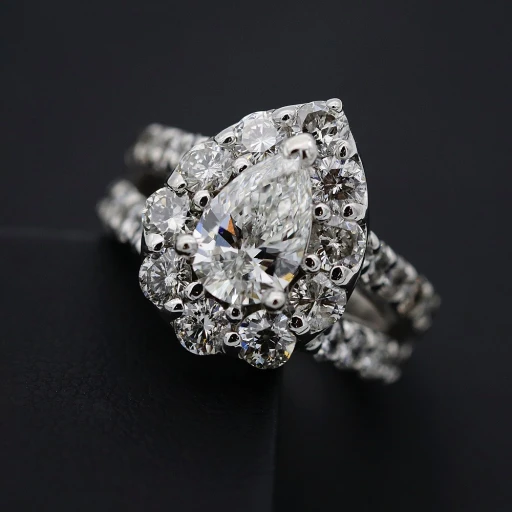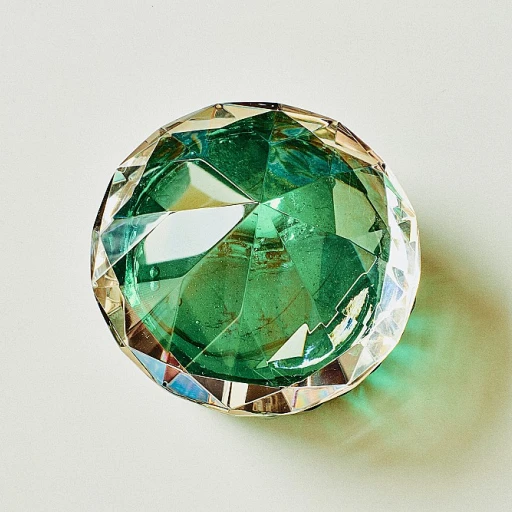
The Origins of Casting in Jewelry Making
The Dawn of Jewelry Casting
The art of casting in jewelry making is as ancient as civilization itself, tracing back to the Bronze Age when artisans first began experimenting with metals like copper and bronze. This era marked a significant leap in craftsmanship, as the ability to melt and mold metals into intricate designs opened new avenues for artistic expression. The timeless allure of gold and other metals became a canvas for creativity, allowing for the creation of pieces that were not only functional but also deeply symbolic.
Early casting techniques were rudimentary yet effective. Artisans used clay and stone moulds to shape molten bronze into desired forms, a process that required both skill and precision. The lost wax method, or 'cire perdue,' emerged as a revolutionary technique, allowing for more detailed and intricate designs. This method involved creating a wax model of the desired piece, which was then encased in a ceramic shell or clay mould. Once the wax was melted away, molten metal was poured into the cavity, capturing the fine details of the original wax model.
As cultures evolved, so did their casting methods. Different regions developed unique techniques, influenced by available materials and cultural aesthetics. The foundry became a hub of innovation, where artisans pushed the boundaries of what was possible with metal casting. Despite the challenges of working with high melting points and the complexities of the casting process, these early pioneers laid the groundwork for the sophisticated techniques we see in modern fine jewelry today.
Materials and Tools of the Trade
The Essential Components of Craftsmanship
The art of casting in jewelry making, particularly using the lost wax technique, requires a symphony of tools and materials. At the core lies wax itself, which is sculpted meticulously to form intricate patterns. This wax model is then enveloped in a heat-resistant material to create a mold. Once the mold hardens, the wax is melted away, leaving behind a cavity in the desired shape. Metals play a crucial role in this process. Gold, a perennial favorite among jewelers for its malleability and timeless appeal, is frequently used. The history of gold in casting jewelry not only reflects its enduring allure but also its functionality (source: The Allure of Timeless Gold). Silver, renowned for its elegant sheen, and platinum, celebrated for its durability, are also popular choices. These metals are melted and poured into the mold, where they take the shape of the original wax model. In addition to metals, modern jewelers often use a variety of gemstones to enhance their creations. Selecting and placing these gems accurately demands precision and skill, contributing to the prestige associated with fine jewelry. The tools, ranging from kilns to casting machines, have evolved over the years to enhance precision and efficiency, making it easier to bring complex designs to life efficiently. Mastering the materials and tools of casting not only ensures the structural integrity of jewelry but also brings forth the elegance and creativity inherent in this ancient craft. Whether refining a classic motif or experimenting with innovative designs, the essential components of craftsmanship continue to underpin the success of casting in the world of fine jewelry.Lost-Wax Casting: A Timeless Technique
The Everlasting Beauty of Lost-Wax Casting
Lost-wax casting, often celebrated for its intricate designs, stands as a testament to the enduring nature of ancient jewelry-making techniques. This age-old method, crafted through years of evolution, remains a cornerstone in creating pieces that are both detailed and unique, highlighting the true artistry of {{ fine jewelry }}.
In practice, lost-wax casting involves creating a wax model of the desired item, which is then encased in a refractory material to form a mold. Once the mold is set, the wax is melted away, leaving a void that is filled with molten metal to shape the final piece. This meticulous process allows for unparalleled detail and precision, ensuring that every curve and detail is perfectly captured.
One of the key features of lost-wax casting is its versatility. It can accommodate a range of materials, from the luxurious glint of {{ white gold }} to the timeless elegance of platinum. This flexibility allows modern artisans to push the boundaries of design, while staying true to ancient methods.
The allure of lost-wax casting extends beyond its technical merits, as it plays a crucial role in safeguarding the cultural heritage embedded in each piece. Different civilizations have adapted this method, leading to a rich tapestry of styles and techniques across various cultures. This cultural dynamism adds an intriguing layer to the modern appreciation and reinvention of ancient casting methods.
The world of fine jewelry continues to be enchanted by the elegance of lost-wax casting. As contemporary designers revisit these age-old techniques, there is a renewed appreciation for the beauty and intricacy that only lost-wax casting can offer. For more on the enduring appeal of these techniques, explore our journey through history and timeless designs here.
Cultural Variations in Casting Methods
Global Interpretations and Techniques
In the expansive realm of fine jewelry, casting methods are as diverse as the cultures that cherish them. Each culture has its unique take on ancient casting techniques, resulting in a rich tapestry of artistry and craftsmanship. For instance, in South Asia, artisans have historically employed the intricate technique of 'Dokra', using lost wax casting to create detailed, filigree-like designs. This method, renowned for its precision, continues to influence modern jewelry designers looking to infuse traditional aesthetics into contemporary designs. Meanwhile, in the Middle East, the tradition of intricate metalwork such as Kundan and Meenakari has been vastly enriched by casting practices. These methods, which involve setting stones into delicate gold surfaces, have roots that trace back centuries, showcasing the timeless appeal of gold and its ability to capture beauty across generations. The African continent provides another fascinating case study. Across various regions, the lost wax casting technique has been applied to create symbolic pieces, often embedded with cultural significance and used in ceremonial contexts. Their artful castings not only capture the essence of cultural narratives but also reflect a deep connection to ancestral craftsmanship. In today's digital era, ongoing technological advancements continue to celebrate and evolve these cultural casting traditions. Modern jewelry designers often pay homage to these age-old methods, marrying them with contemporary styles to create pieces that resonate with today's global audience. Through these cultural variations, ancient casting methods find new life in the modern world, bridging the past and present in the artistry of fine jewelry.Challenges and Innovations in Ancient Casting
Overcoming Barriers and Sparking New Ideas
The ancient casting methods in jewelry making are not without their challenges. One of the main hurdles faced by artisans throughout history has been the limitation of materials. While metal alloys are a staple, accessing and utilizing diverse materials such as ceramics or glass required innovative thinking. As technology and knowledge progress, modern jewelry makers are finding new ways to incorporate these challenging materials, maintaining the integrity and uniqueness of ancient designs. Moreover, traditional casting techniques often demand meticulous skill and patience. Lost-wax casting, for instance, involves multiple steps that leave little room for error. However, it's in these challenges that artisans find room for innovation. Modern artisans are integrating advanced technology, such as 3D printing, to enhance the precision of these intricate processes, making casting more accessible while preserving its historical value. Adapting various cultural influences is another challenge. With each culture bringing its unique style and methods, jewelry makers are tasked with uniting these diverse influences into cohesive designs that honor their origins while appealing to contemporary audiences. The blend of craftsmanship and cultural motifs presents both a challenge and an opportunity, allowing for the creation of jewelry pieces that tell a multitude of stories. It's clear that ancient casting methods, despite their challenges, continue to inspire the modern world. The craftsmanship required and the dedication to overcoming these challenges result in finely crafted pieces that echo the elegance of bygone eras.The Legacy of Ancient Casting in Modern Jewelry
Embracing Age-Old Mastery in the Present Day
The influence of ancient casting techniques on modern fine jewelry is undeniably profound. The legacy of these methods is evidenced in the artisan’s ability to transform basic raw materials into resplendent pieces, a skill that remains integral to contemporary craftsmanship. With the enduring appeal of gold and other cherished elements, creators today draw from the time-honored practices pioneered millennia ago.
As explored earlier, the lost-wax casting technique continues to enthrall modern jewelers with its ability to produce exquisite and intricate designs that speak to both innovation and tradition. Furthermore, by integrating cultural variations into today's methods, jewelers can offer pieces that resonate with diverse histories and storytelling—adding a unique personal touch to each creation.
This deep-seated heritage also presents certain challenges and opportunities for innovation. As artisans continue to blend age-old methods with cutting-edge technology, the result is not merely a return to the past but a celebration of its enduring relevant elegance. Successfully navigating these intricate processes allows jewelers to showcase a level of expertise and mastery that enhances the value and desirability of their creations.
Ultimately, ancient casting techniques are more than just a throwback; they are a testament to the skill, passion, and dedication of the artisans who once paved the way and those continuing to craft stories in precious metal today. As such, the legacy of these methods in fine jewelry is not only preserved but continues to thrive, ensuring that the allure of expertly crafted pieces endures through the ages.




